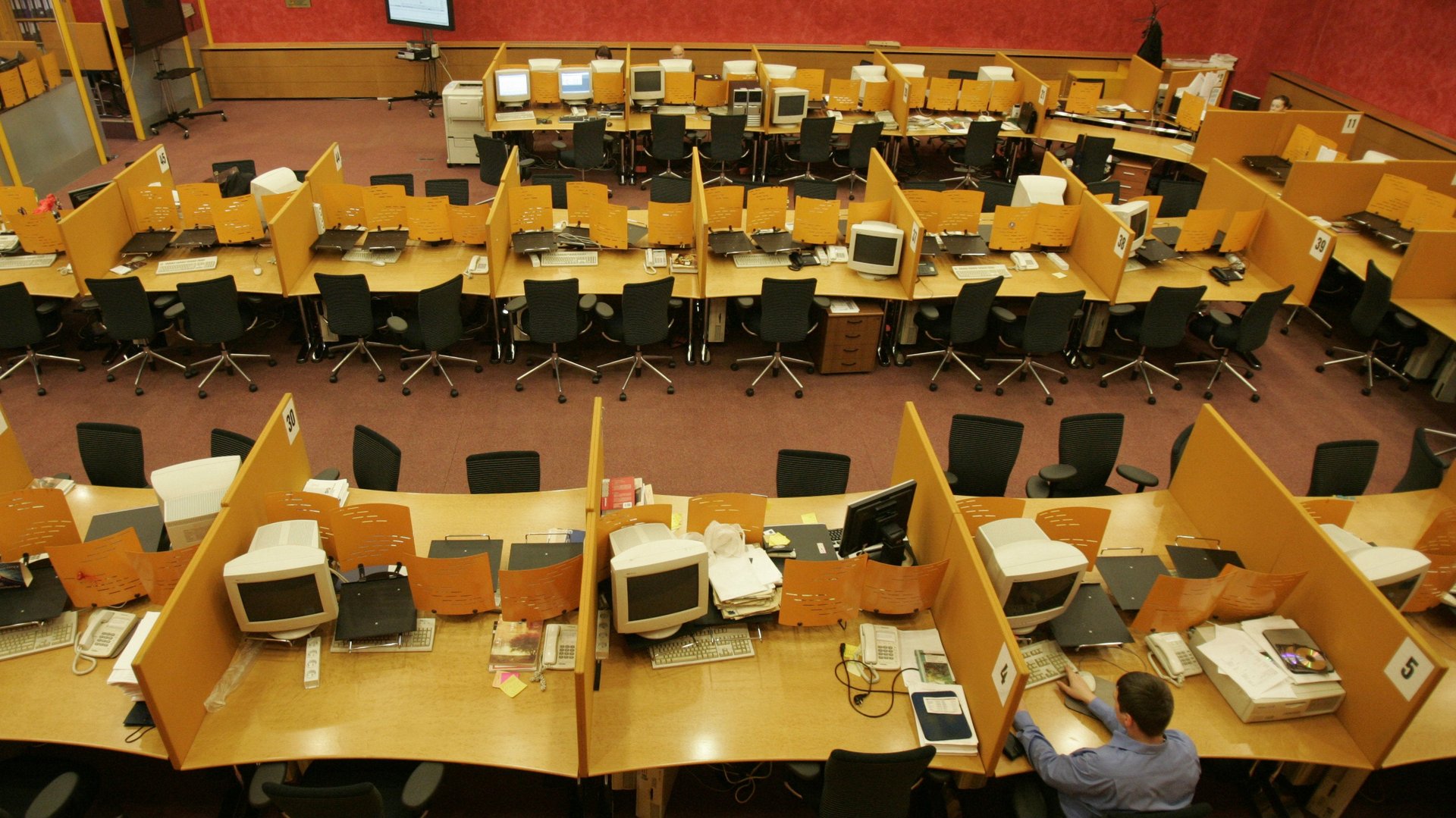If nearly 40% of Americans aren’t working, what are they doing?
The most recent US jobs numbers masked a dark story. Unemployment held steady at 5.1%, but only 59.2% of Americans have a job. The difference is the unemployment rate only counts people who don’t have a job and are actively looking for one. The labor-force participation rate is perhaps a more accurate gauge of the economy. It includes people who’ve given up, don’t want to, or can’t work, and it fell to 62.4% last quarter.


The most recent US jobs numbers masked a dark story. Unemployment held steady at 5.1%, but only 59.2% of Americans have a job. The difference is the unemployment rate only counts people who don’t have a job and are actively looking for one. The labor-force participation rate is perhaps a more accurate gauge of the economy. It includes people who’ve given up, don’t want to, or can’t work, and it fell to 62.4% last quarter.
Labor-force participation has fallen steadily since the start of the recession, and years into the recovery, shows no sign of turning around. It hasn’t been that low since 1977, and back then it was still common for women to be homemakers. The low labor-force participation rate got Fed watchers talking that maybe an interest rate hike in December will be too soon.
Fed policy, of course, isn’t a magic cure-all for a sick labor market. If lots of people are out of the labor force because they are retired or can’t find work because their skills aren’t useful, low interest rates won’t do them much good. Whether or not low rates are still warranted depends on why so many Americans aren’t in the labor force anymore.
Some of the decline results from the fact that the population is older, which means more retirees per worker. The President’s Council of Economic Advisors estimates half of the decline (pdf) since the recession’s start can be blamed on an aging population. But lots of working age Americans, aged 16 to 64, aren’t in the labor force either. The figure below shows the labor-force participation rate over the last 15 years by age group:
Most of the decline in participation came from fewer young people working. Older Americans are more likely to be working, while everyone else is working a little less. Why are younger Americans not working?
The figures below, from the March Current Population Survey breaks down labor force status and how it has changed in the last 15 years for different age groups. The decline in labor-force participation for young people can almost entirely be explained by their staying in school longer.
The weak labor market probably induced people to study and wait things out. Or it could have little to do with the recession. Globalization and technology creates an economy that demands more education in order to be successful. The latest generation may be responding by getting more degrees to stay competitive. The flip side is the rise in school attendance probably accounts for the explosion in student debt. But assuming the education students received was valuable, the low labor-force participation rate may indicate a positive trend. It could mean a more educated, competitive, and productive labor force that possesses the skills necessary to navigate an uncertain job market.
Fewer 25-to-54-year-olds are in the labor force, too. About 83% participated pre-recession, now only 81%—a small decline but worrying nonetheless. Here’s what they’re up to:
It’s a pretty even split, a few went on disability, some are taking care of kids, some went back to school. But there is no overwhelming evidence of scores of discouraged, prime-age workers waiting out a bad labor market or permanently giving up as some predicted.
Older American workers are more likely to be working these days. That’s probably because early retirement is no longer a viable option for many of them.
But a large share of the fall in early retirees, down 6.5 percentage points since 2000, is cancelled out by an increase in older workers on disability, up 3 percentage points. It could be they had problems finding work, found an inhospitable market for their skills, couldn’t afford to retire yet and used disability as a way out instead. It is a terrible situation that robs the economy of productive workers and valuable citizens the dignity of work. Perhaps as the economy improves some will return to work, but if they are using disability as early retirement it’s unlikely that many of them will.
The labor market still has not fully recovered. But restoring the labor-force participation rate will take tools that are not in the Fed’s arsenal. Some of the decline represents a positive trend: young people getting more eduction. The rest of the decline can only be fixed by getting older people back to work and imparting the skills they need to contribute, which takes more than low interest rates.